Let me see at least one person who doesn’t like pancakes… !! well, I am sure, if you look hard enough, you will find, few that’s you can count them on the fingers of a one hand. Those round pancakes, made of flour, milk and eggs, can be eaten in a thousand different ways: thin or thick, salty, sweet, with meat, vegetables, fruit, cheese … Rolled up , folded into neat envelopes, baked, fried, covered with sauce. Everyone, even the most picky eater, will definitely find something for themselves.
Pancake recipes from around the world allow you to create a variety of pancakes – thin, thicker, spicy, sweet, or crunchy. While we all know they’re delicious, they look completely different depending on the region of the world in which they are made
Pancakes are famous all over the world. They are prepared quickly from simple and available in every kitchen ingredients. Of course, in different parts of the globe, pancakes are prepared and served a bit differently, and that’s the beauty of this dish. Are you ready to travel around the world, to follow the trail of pancakes?
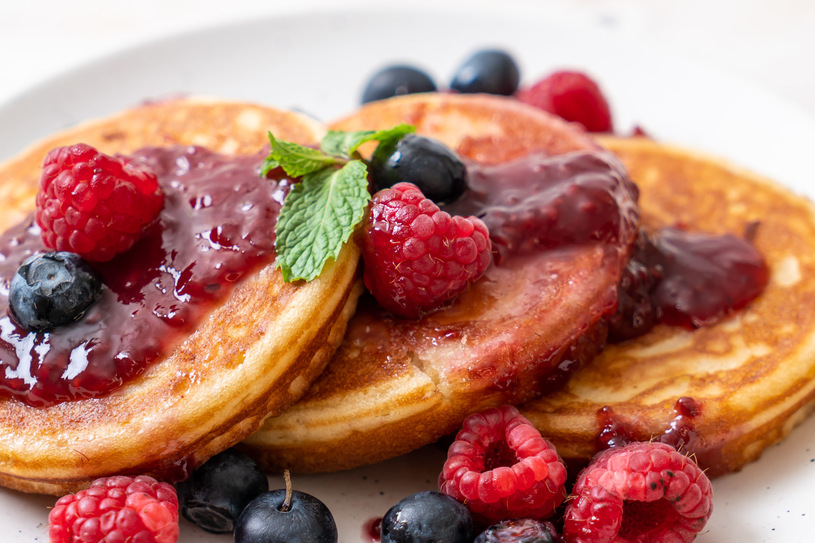
A short history of the pancake…
It is not really clear who invented the pancakes and when.
The history of the creation of the first flour and milk pies probably dates back to antiquity. In the first century AD, the Roman Iceman Ötzi used eggs, flour, milk, and spices to prepare a prototype of pancakes, which was formerly called flat bread.
Until the 15th century, many European countries were making their own types of pancakes from scratch, using a wide variety of ingredients such as wheat or buckwheat flour, sometimes alcohol (beer or wine), and herbs and spices such as cloves, cinnamon, and nutmeg.
In the 18th-century Friesland, a province of the Netherlands, the traditional wedding breakfast was pannenkoek, a pancake made of milk and honey.
Italians say that Florence is the cradle of pancakes. From there, Catherine do Medici took the recipe for thin, fried pancakes to France. However, according to old tales already in ancient Rome, a dough made of flour, eggs and milk was made and poured over the hot surface. Following different theory, the Chinese were the first. Either way, pancakes have been known almost all over the world for centuries. Depending on the geographical location , this dish vary significantly.
Making of the dough…
The most important ingredient in pancake dough is, of course, the flour. In Europe, most often wheat, in Asia – rice, in South America – corn, in Russia – buckwheat, in Brazil – tapioca, and in India – chickpeas. The taste and appearance of a dish are also influenced by eggs – their quantity and the way of adding (whole, just yolks, or in the form of beaten egg whites). And finally, the liquid – in our case it is milk mixed with water, but it can also be beer, buttermilk, kefir, yoghurt or just water. So, as you can see, there is plenty of choices and plenty of ways of making the same simple dish , in many different parts of the globe.
The dough can be colored with shredded spinach, beetroot juice, melted chocolate, carrot juice, tomato paste or saffron. The field does not end there. Ready-made pancakes can be used to make a cake, a lasagna-like casserole, or croquettes.
How many cultures, so many pancakes….
France
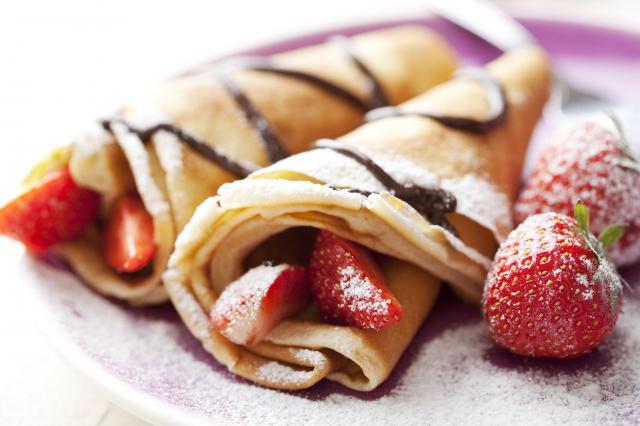
French crepes are said to be the best in the world (whoever said that probably did not tried the other varieties). They are prepared from wheat flour, melted butter, eggs and milk. To make the dough lighter, the French sometimes add a little beer or cider. They are fried on a special pan/ device called a creperie. The dough is spread with special wooden with a spatula, making the crepe thin and delicate. Crepes is served with powdered sugar or preserves.
Poland
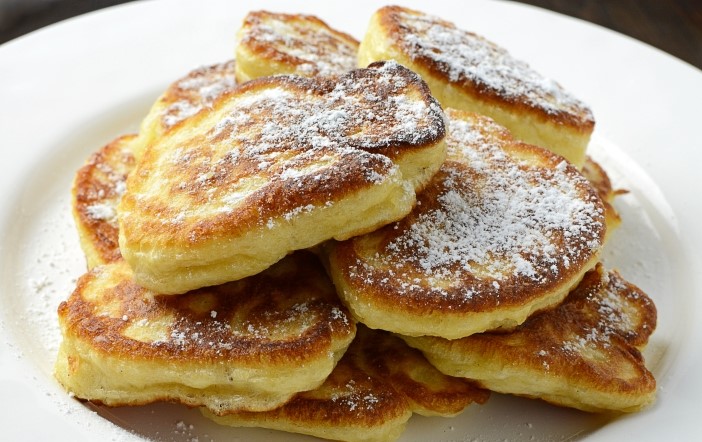
Racuchy are traditional Polish dish. They are the cross between the crêpe and the American pancakes. Racuchy are made from flour, milk, eggs, sugar, and a pinch of salt. Racuchy are made with yeast or, in other versions, baking powder or baking soda. Traditionally they have pieces of raw apples mixed into the dough. Racuchy are pan fried in oil. In Poland, they are usually eaten for dinner, snack, or supper. Commonly served plain, sprinkled with sugar, or topped with powdered sugar. In alternative versions some cream or sour cream can be used.
Italy
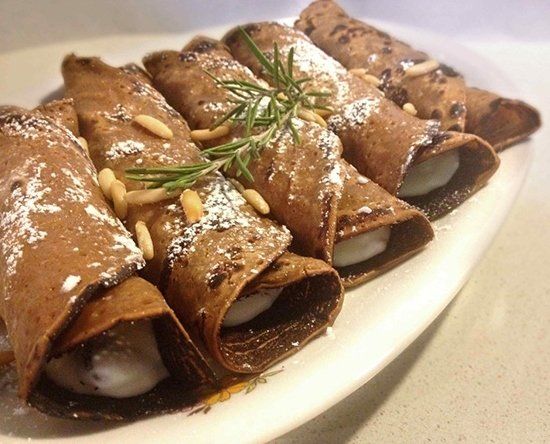
Necci are thin pancakes with crisp edges, born in the Tuscany region of Italian countryside. They look intimidating, when in fact they are nothing more than simple crêpes made just with chestnut flour and water. They could be then eaten plain or filled with sausage, pancetta, or ricotta. A good spoonful of mellow ricotta turn them into poor mountain people’s sweet treats or into a humble and unpretentious afternoon snack.
Hungary
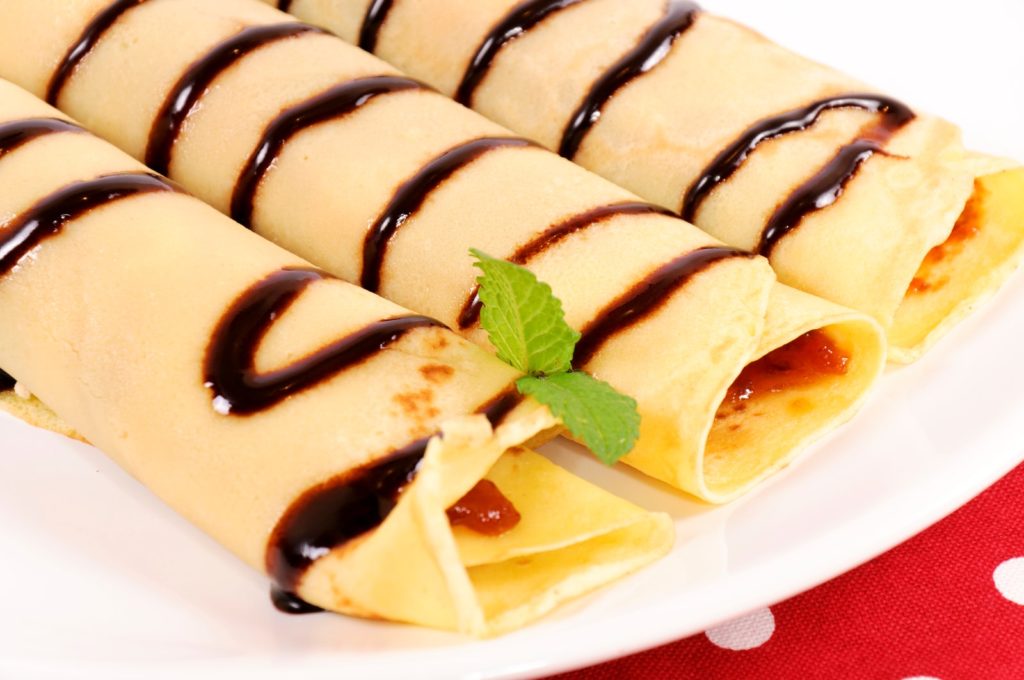
Palacsinta are Hungarian pancakes. They will remind you a lot about the French classic ones. they are very thin and eaten as a dessert. They are served with fruit, preserves, cottage cheese, dried fruits, and nuts.
Russia
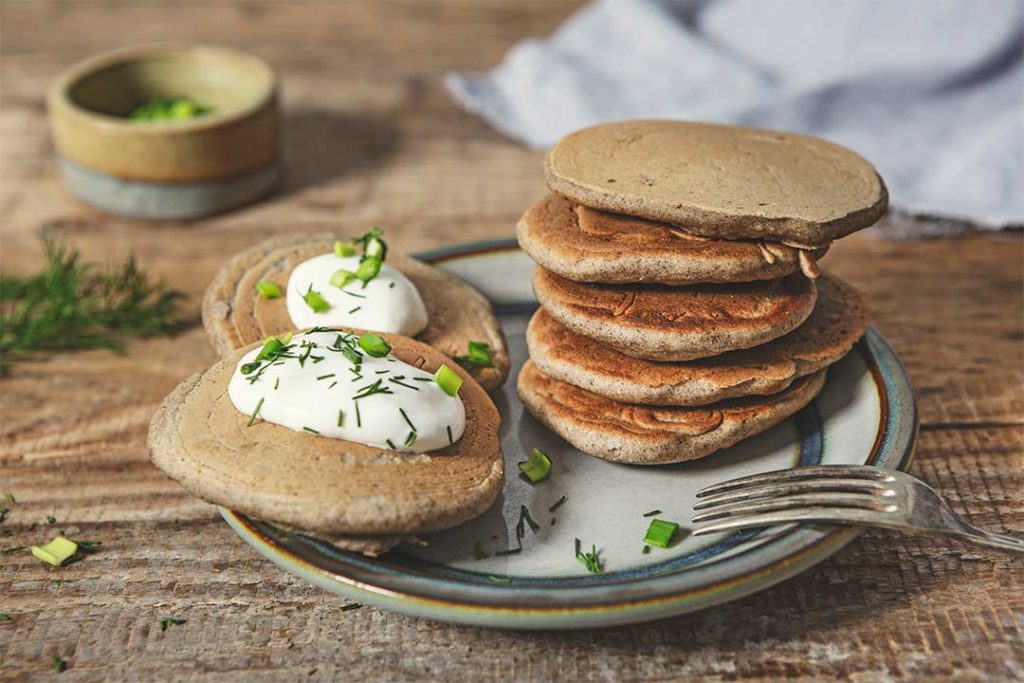
The specialty of Russian cuisine are blinis, i.e., pancakes made of flour, eggs, milk, and butter, as well as yeast, which make the dough unique. The most characteristic ingredient of pancakes is buckwheat flour, often used alongside wheat flour. Kefir or various kinds of groats are often added to the dough. Russians love a dry version of pancakes, e.g., with smoked sturgeon, salmon, caviar, mushrooms, but their sweet version is equally popular, e.g., with jam or whipped cream and chocolate sauce.
Canada
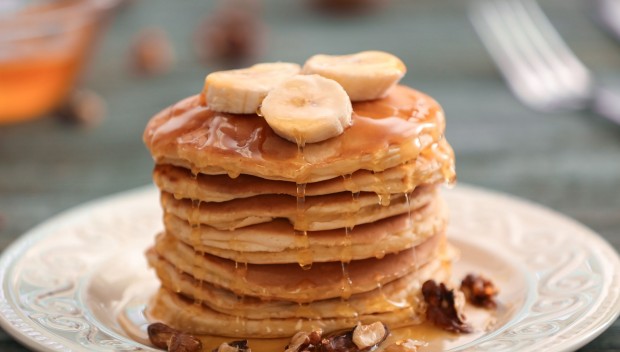
Canadians love fluffy biscuit pancakes. Baking powder or baking soda is used to fluff the dough, and yoghurt is added instead of milk. Small, chubby, round pancakes can be served generously with maple, butter or chocolate syrup, Peanut butter, or fresh fruit.
Poland
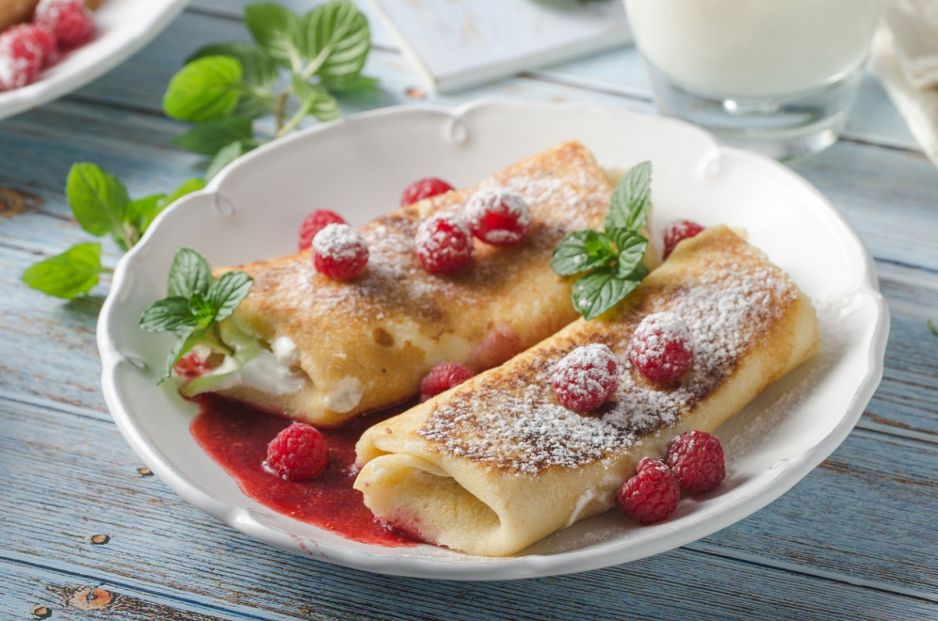
Naleśniki They can served as the main course as well the dessert (depending on the filling!), The pancakes are somewhat similar in style to French pancakes. Made from wheat flour, eggs and milk, pan fried into the thin layer of crispy goodness.
Ethiopia
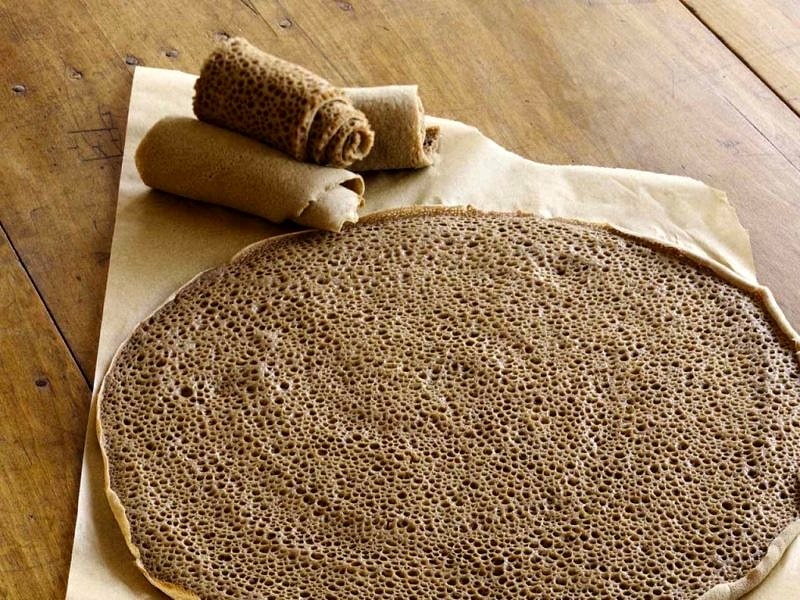
The Ethiopian version of the pancake is Injera. It is made from teff flour mixed with water. The dough ferments for several days, making the finished pancakes sour in taste. Injera is traditionaly served with vegetable or meat sauces, and it’s use as a spoon or food scoop. Those are one of my favorites…
Venezuela
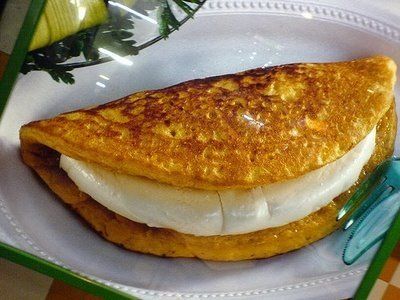
There is nothing better than traditional cachapa – a cake made of flour and ground corn kernels. Cachapas are commonly eaten for breakfast, as a snack , especially while traveling. They are most often served with butter, white creamy Queso de Mano cheese, somewhat similar to mozzarella, or pieces of ham.
Argentina
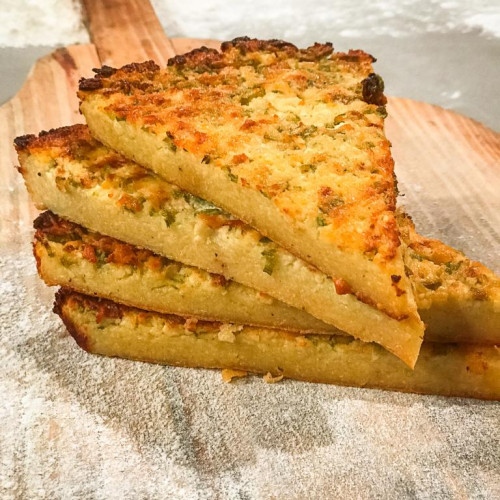
Faina, it may not looks so spectacular like the other examples in this category. Basically, it is a pancake from Argentina. To make it, we need chickpea flour, olive oil, water and possibly rosemary and sea salt.
Brazil
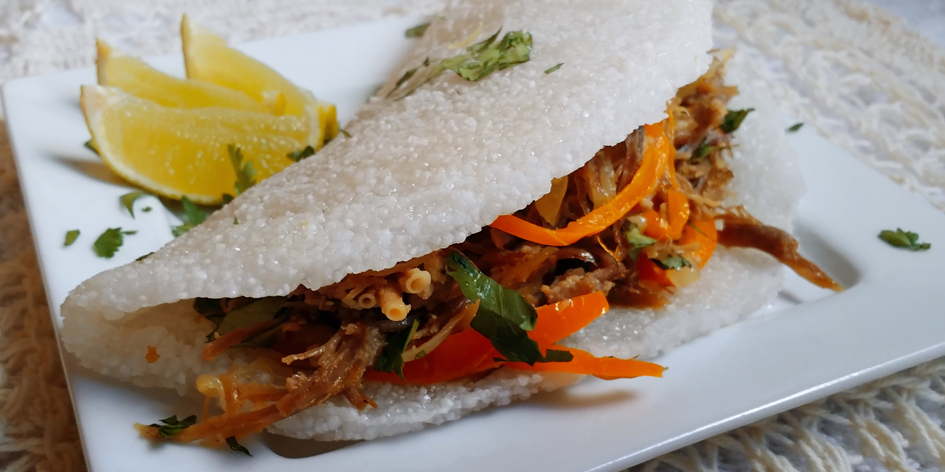
Tapioca crepes are made from cassava starch. Tapioca is a staple in the diet of many people throughout Brazil and South America. Tapioca pancakes can be stuffed with savory or simply enjoy it like a square with melted butter and shredded coconut, which are popular additions.
Japan
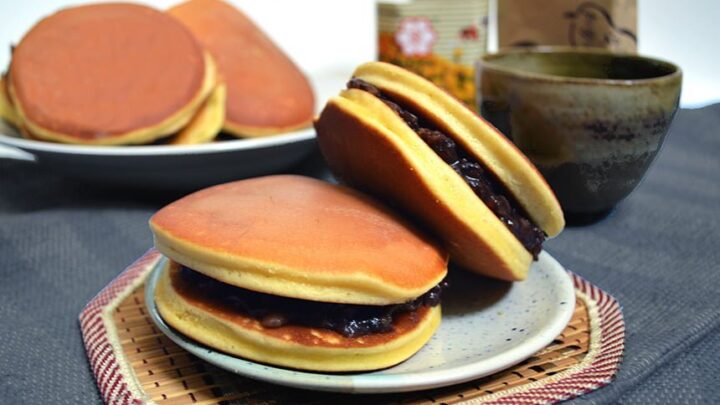
Japanese dorayaki pancakes are filled with sweet stuffing. The pancakes are made from a very popular in Japan honey sponge cake called kasutera (castella), reminiscent of sponge cake. Anko paste made of red azuki beans and sugar is put between the two pancakes.
Russia
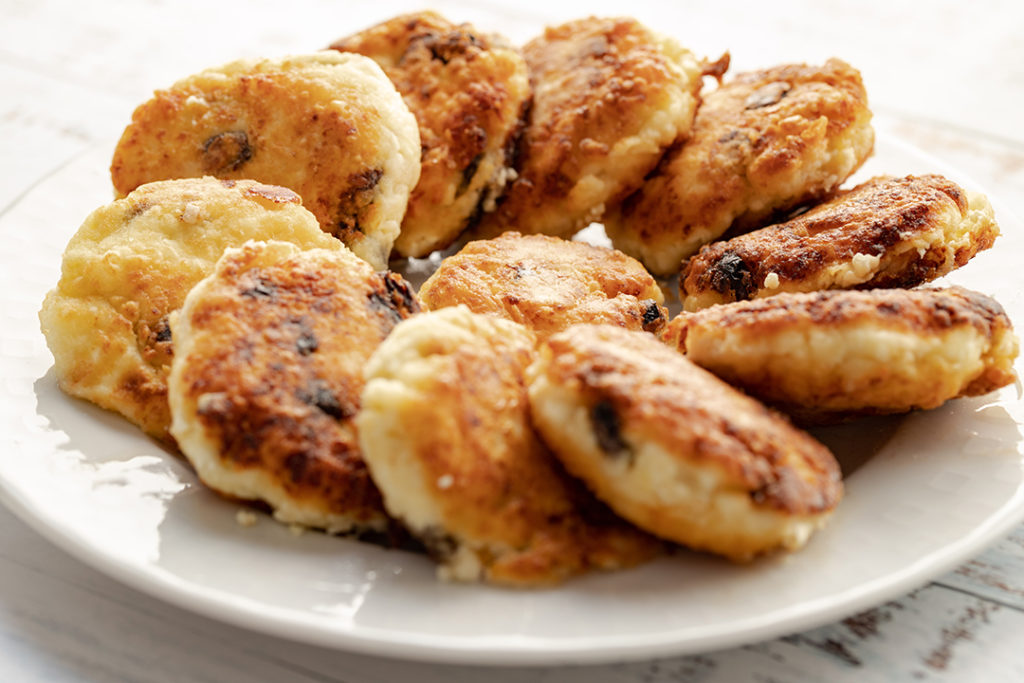
Syrniki. The name comes from the Russian word for cheese, which is the basic ingredient of this dish. The variety of additives depends on the region where Syrniki is prepared These small thick pancakes are known as “oladyi” in Russia. The batter is made from Cottage cheese sweetened with sugar, with wheat or buckwheat flour and may also have apple and raisins. They are served with sour cream, and various sweet toppings like jam, fruit preserve or honey.
India
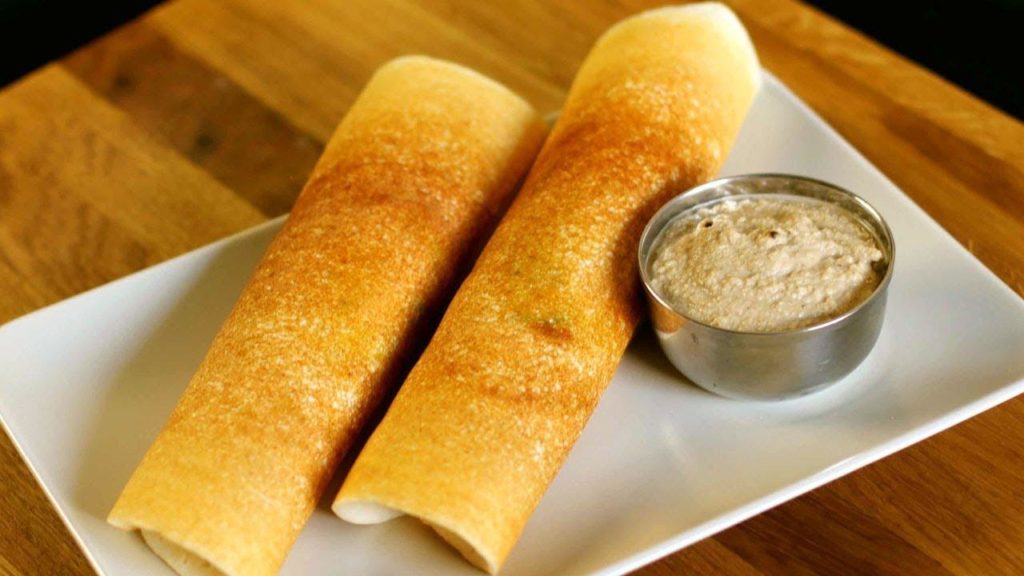
Dosa, which is one of the types of pancakes eaten in India, is most often made from fermented rice dough with the addition of urid dal beans. It is usually eaten as an addition to other dishes or for breakfast or dinner. The cakes should be paper thin.
Malaysia
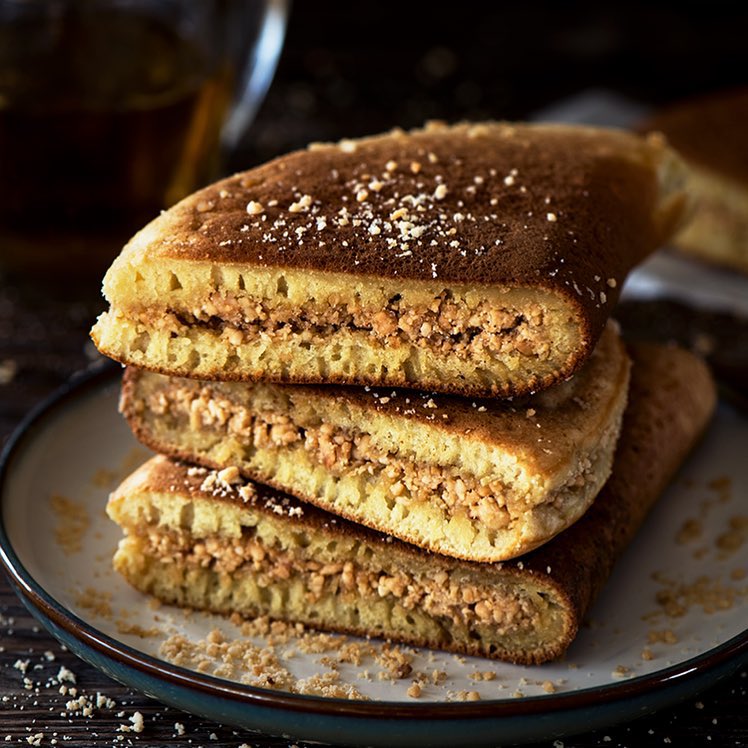
Apam balik is an extremally popular delicious street food/dessert also known as terang bulan, martabak manis or mànjiānguǒ. It is very commonly present in many flavor varieties at specialist roadside stalls throughout Brunei, Indonesia, Malaysia and Singapore, literally all-over Southeast Asia. A particularly delightful version of the pancake in Malaysia is soft, fluffy, and stuffed with a wonderful peanut sauce.
Japan
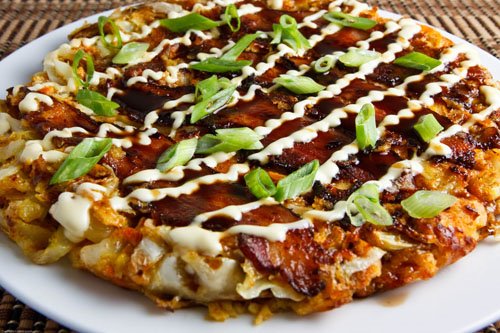
It is said to be native to city of Osaka. Okonomiyaki is a Japanese savory pancake containing a variety of ingredients in a wheat-flour-based batter. Some versions of this savory pancake has a shredded cabbage or jam mixed into the base. Since meat, shrimp and mochi can be served on top, okonomiyaki has also been often compared with an omelet or pizza.
Netherlands
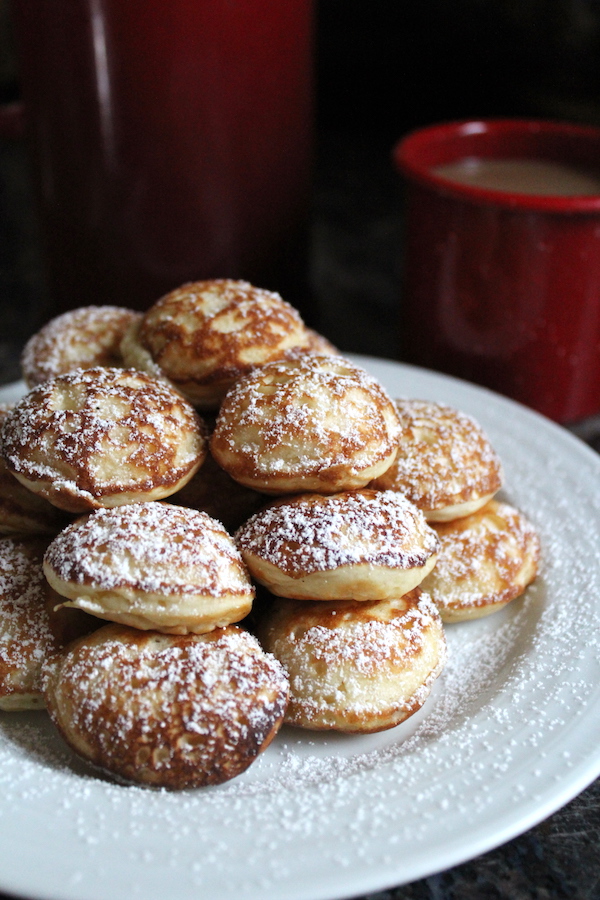
Poffertjes are served with powdered sugar and butter, small, spongy poffertjes have long been a popular delicacy in the Netherlands and are perfect as a snack while hiking along the canal. They are made by using the special pan; cast iron , heavy with round cavities for the pancakes. You will definitely find them in every home .
Sudan
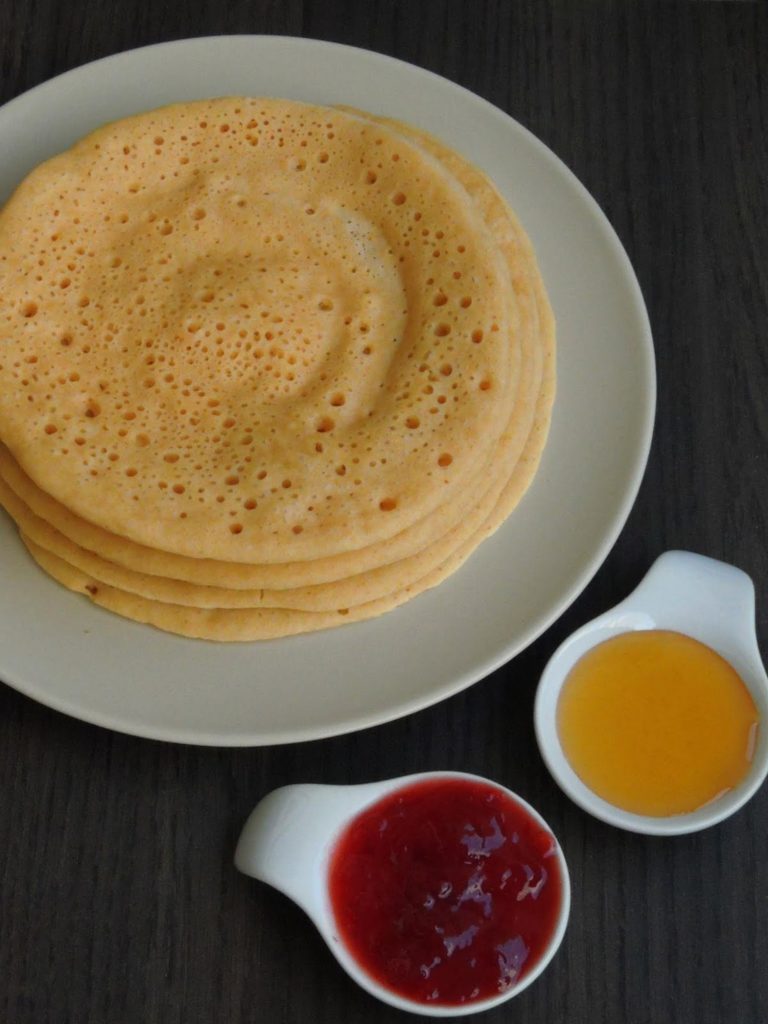
Gourrassa is little less known than Injera, it is no less tasty and served in a similar way. Gourrassa is wheat-based flatbread. It is made of wheat flour, baking powder, water and salt. It is usually baked in a circular shape. Traditionally served with stew, yogurt, or honey. It is mostly eaten for breakfast or dinner
Korea
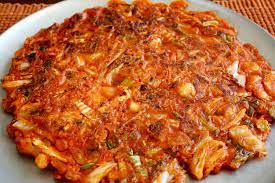
Kimchi-buchimgae or kimchi pancake, sometimes also referred to as kimchi-jeon. It is predominantly made with sliced kimchi, flour batter and sometimes other vegetables. However, meat (ground pork) is also popular addition . Since Kimchi is a basic in Korean cuisine, this spicy savory pancake has long been a staple of Korean homes. A popular side dish or snack, kimchi jeon is sure to pack a punch with a fiery flavor.
Indonesia
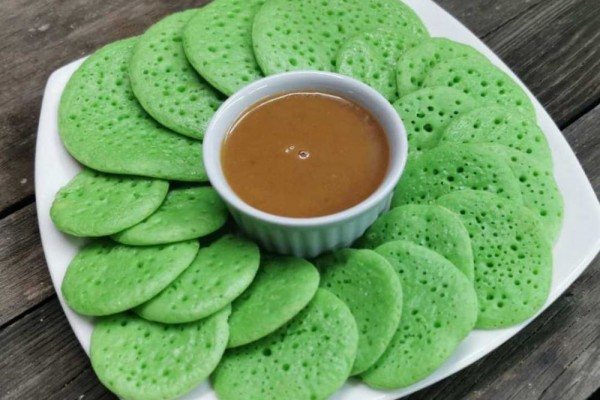
Kue Serabi is Indonesian Pancakes that are made with coconut milk, sometimes grated coconut is added and rice flour, yeast, pandan leaves or extract and an egg. Sometimes all-purpose flour too is used. Usually served with a coconut milk and palm sugar sauce. Traditionally, Kue Serabi are served without any fruit or topping as it sold as street food. Serabi is usually served coated with sweet sugar syrup, although other Southeast Asian countries have their own varieties.
Austria
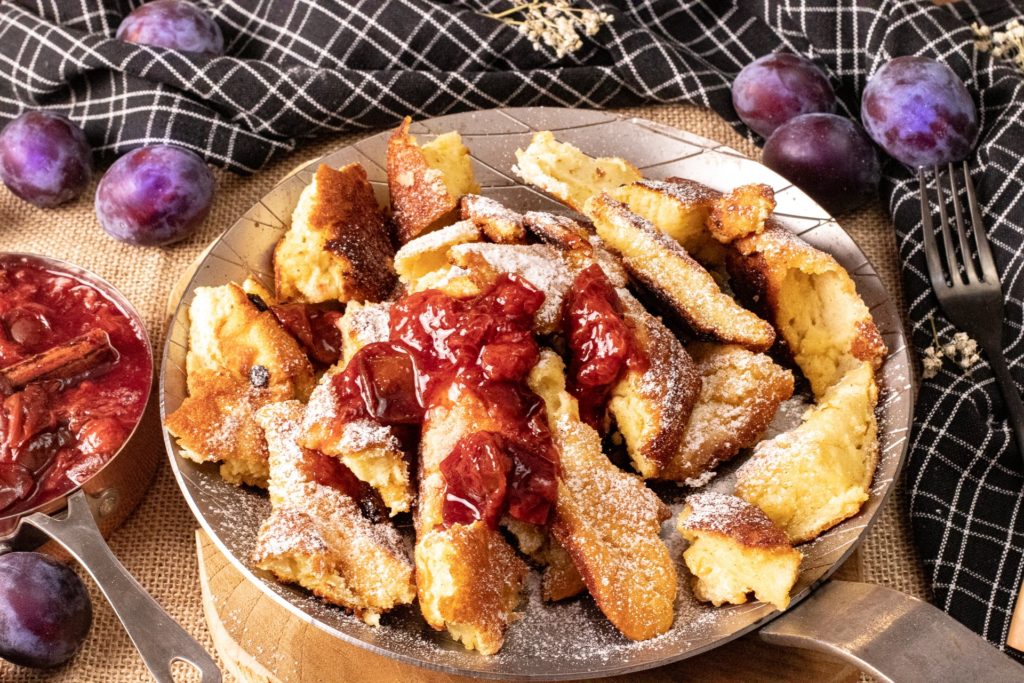
Kaiserschmarrn (Scrambled Pancake) is the pancake in the land of Austria. Named after the Austrian Emperor Franz Joseph I, this provocative in look dessert is sure to tempt your taste buds. A sweet fluffy pancake made with rum-soaked raisins is torn into bite-sized pieces, caramelized, and served sprinkled with powdered sugar, applesauce, and preserves or with fruit compote.
Mexico
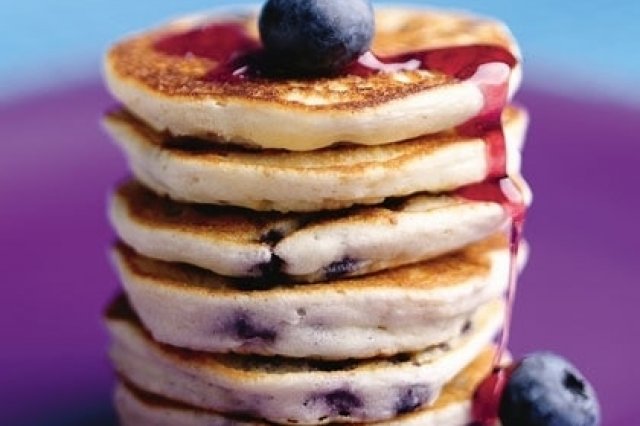
Cornmeal pancakes. Just one of Mexico’s many delicacies. Typically made with corn meal, Mexican hotcakes are a popular snack, breakfast food, and festival delicacy. They can be sweet or savory. Spicy or sweet. Anything is possible. In fact, any time you savor hot cakes and their tempting toppings, this is cause for celebration!
Nepal
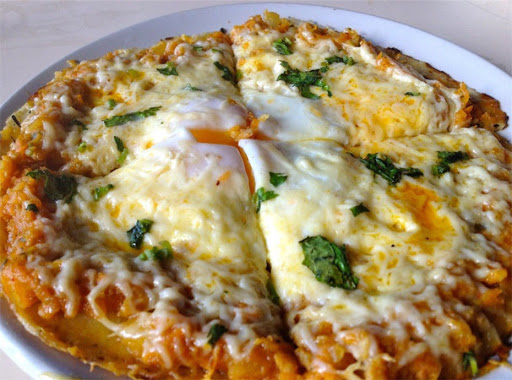
Chatanmari is a kind of very thin pancake/crepe usually made from rice flour. It is regarded as a delicacy. It is eaten as a snack or an appetizer during festivals, holidays and other special occasions. Nowadays they are available all year round. It is often referred to as Pizza. There are many varieties of Chatānmari like Egg Chatānmari, Keema Chatānmari, Mix Chatānmari and Plain Chatānmari. Popular both as a snack and an appetizer, the rice flour pancake can be enjoyed with a whole range of savory and sweet toppings.
Belarus
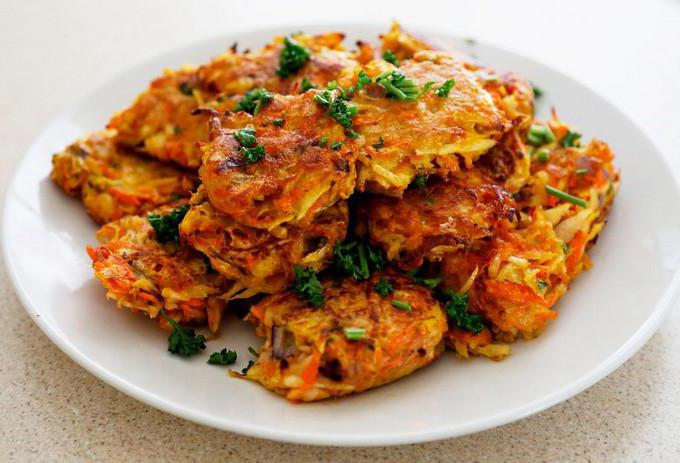
Draniki traditionally made in every house from grated potatoes, which are combined with an egg. Draniki have long been the basis of Belarusian cuisine. They will come served with variety of toppings and condiments. The nation’s favorite food is as hearty as it is healthy and is sure to warm you up on a cold winter night.
Usa

American Flap Jacks pancakes, have to be plump and delicious. Even Though they resemble other pancakes, American pancakes are stiffer and plump. Traditionally served in a pile and topped with maple syrup, butter syrup, pancake syrup or just batter.
Finland
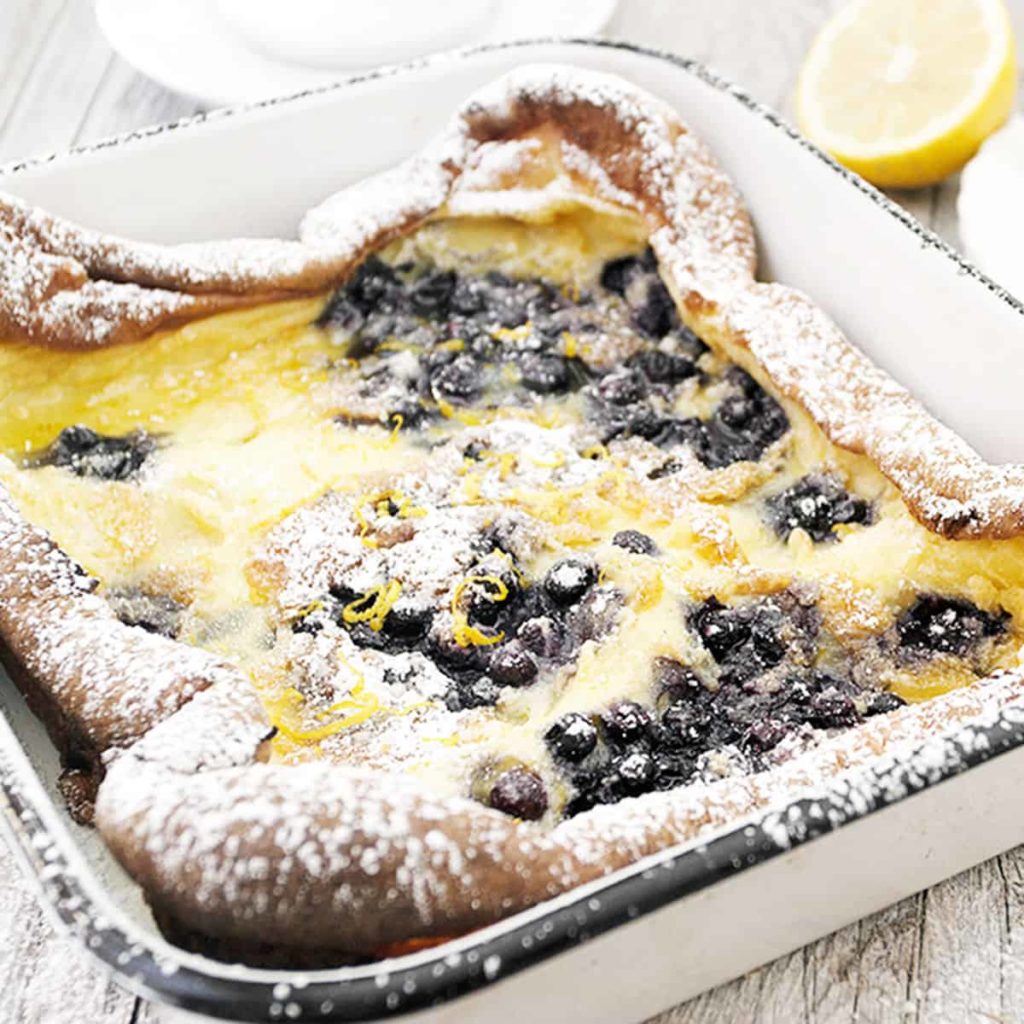
Pannukakku means “pancake” in Finnish. However, it does not resemble the traditional pancake. It is much thicker. It is spread in a baking dish and fully baked in the oven. Those who have tried it emphasize that it is very delicate, moist inside, and slightly reminiscent of waffles.
Morocco
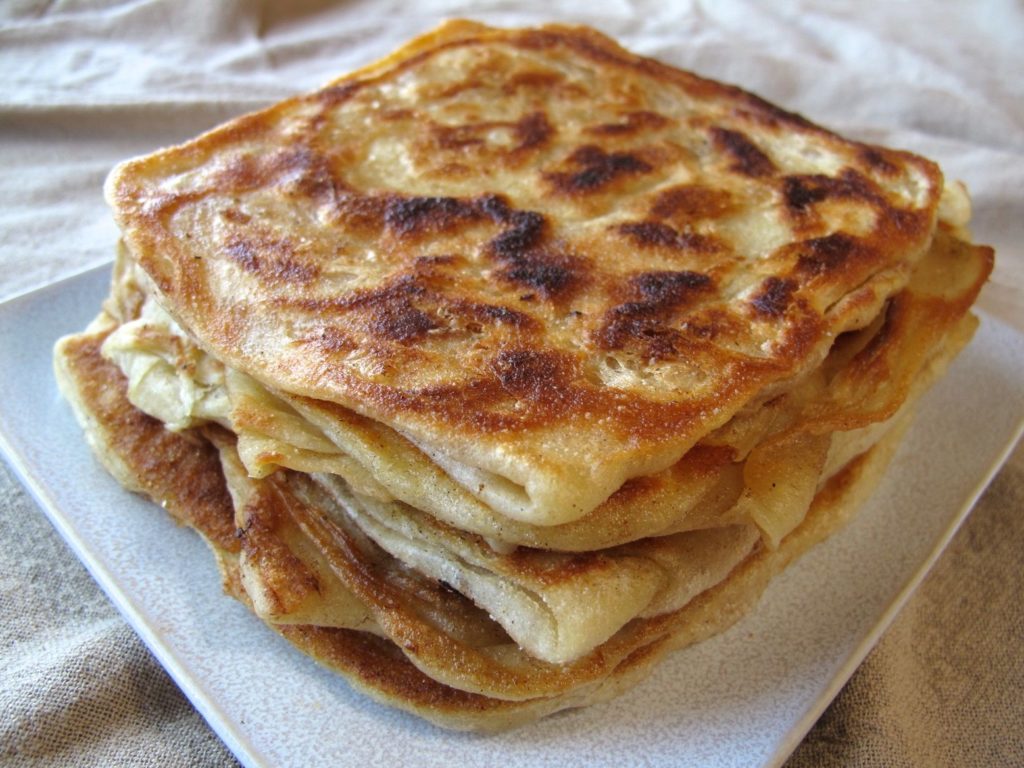
Msemen are pancakes made from yeast dough. Their characteristic feature is the layered structure (as in puff pastry) and square shape. These pancakes are made from durum flour (semolina), wheat flour, yeast, sugar, butter, water, and a pinch of salt. They are fry in a very hot pan, in a little oil. Msemen can be eaten with, for example, honey, jam, or Nutella.
China
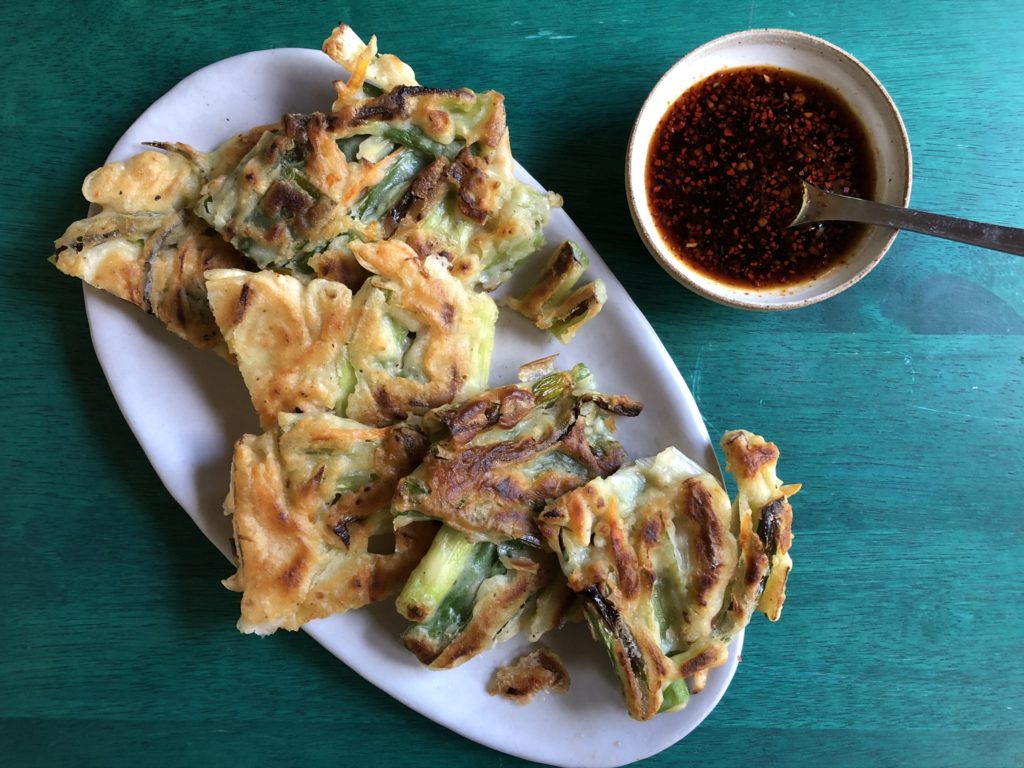
Chinese scallion pancakes are one of the traditional Chinese street food and taste perfect for breakfast. Crunchy and aromatic pancakes are easy to prepare. They taste great with spicy soups, served as a snack or appetizer, usually with duck. With the meat addition or not, it will always come with tasty dipping sauce
Denmark
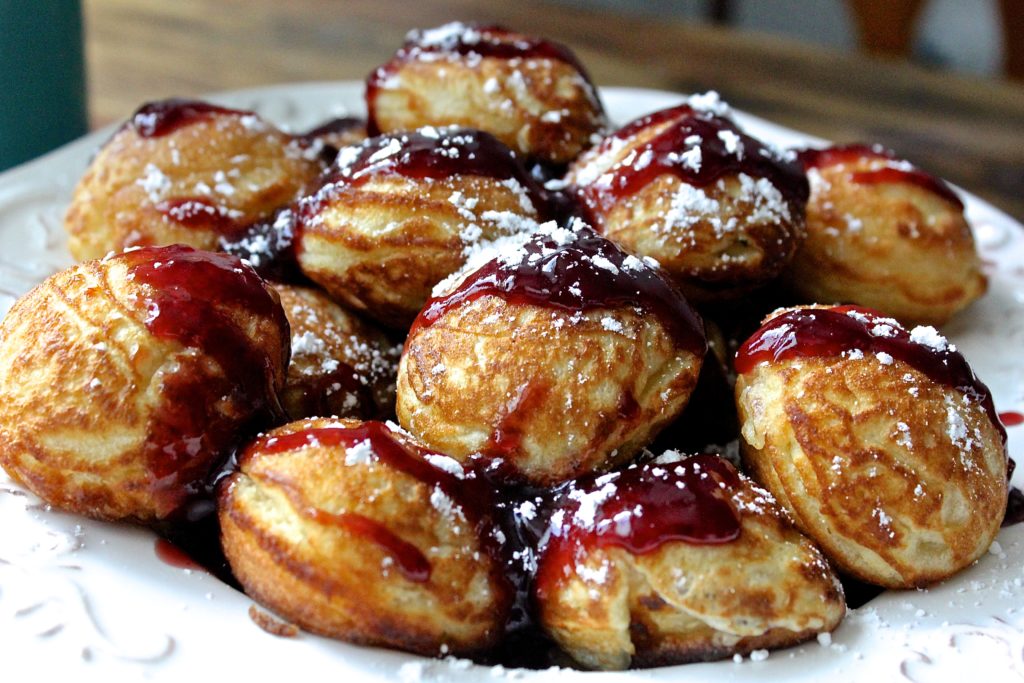
Traditional Danish pancakes, called Æbleskiver, are spherical in shape. They are distinguished by a skin resembling the consistency of European pancakes and a fluffy interior. They are baked in a special frying pan with hollows. Sometimes they are served with apple slices, jam or sprinkled with powdered sugar. Whipped cream and maple syrup are also popular additions.
Philippines
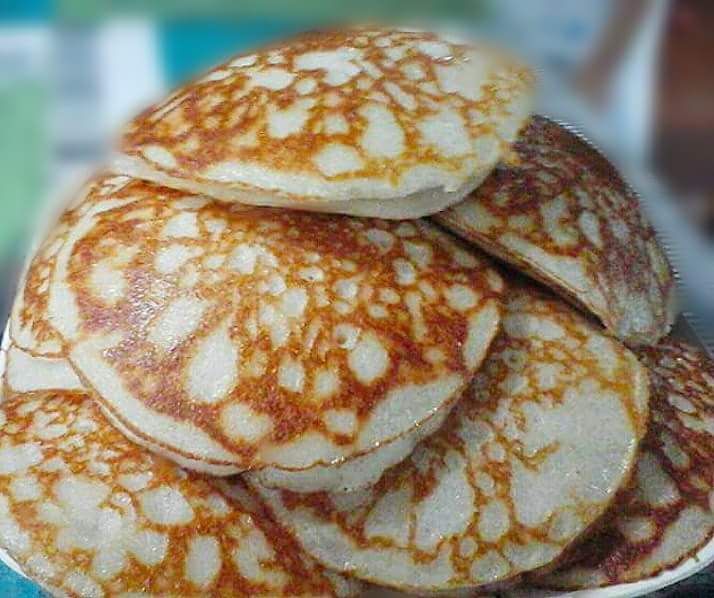
Traditional Filipino dish salukara pancakes . It is made with rice flour, coconut milk, sugar, and water. Exactly the same ingredients to make the Bibingka Cake . They are cooked in a pan traditionally greased with pork lard. They are commonly eaten for breakfast The spicy pancakes in the Philippines with smoked pieces of fish.
Finland
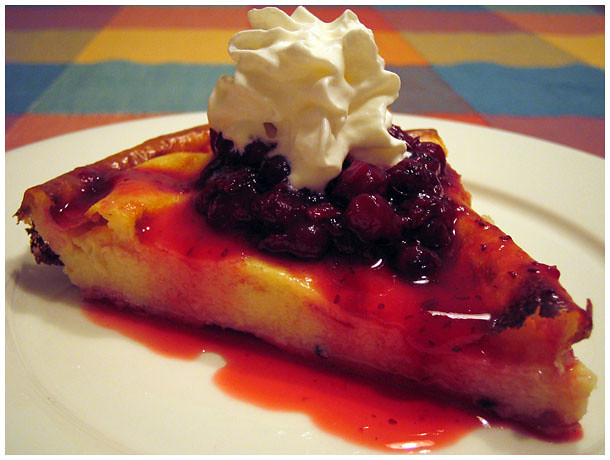
Ålandspannkaka or Ålands Pannkaka means “pancake of Åland,” (group of islands off the Finnish coast). It’s less a pancake and more a baked custard made from cooked semolina or rice pudding, baked with flour, eggs and cardamom. The resulting pancake is eaten as a breakfast or mid-afternoon snack, often served with stewed prunes and jam. The Åland pancake is a type of pancake baked in the oven Finnish pancakes from the Åland Islands can be eaten cold or hot, traditionally served with prune jam and whipped cream.
Greece
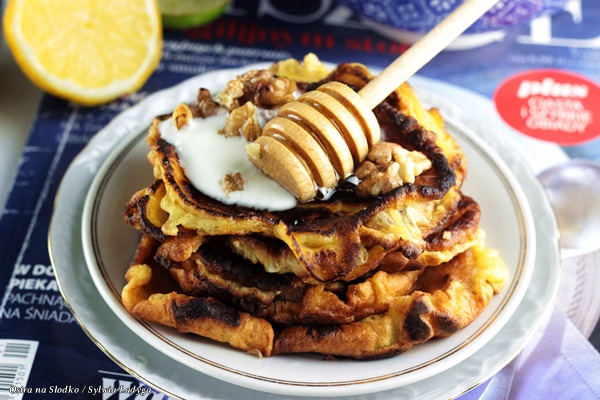
Greek Tiganites were known since antiquity. Small, not too sweet, perfect for breakfast or afternoon tea.
They are usually served with the addition of honey, nuts, and thick Greek yoghurt. They taste fantastic, they are made in a flash and are a great idea for both children and adults!
Spain
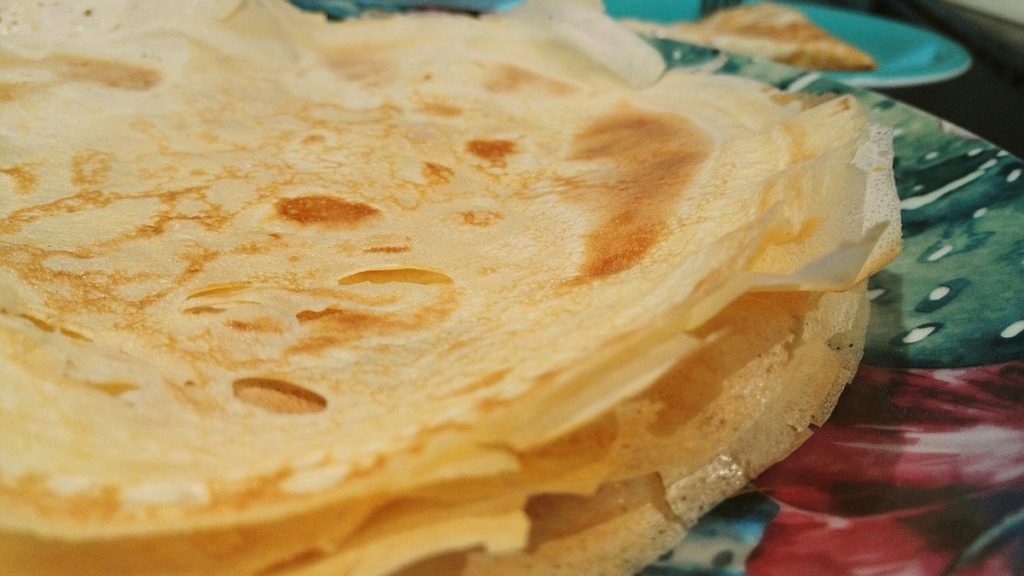
Spanish pancakes, called philloas, they are traditional dish from Galicia, in the North of Spain. They can be prepared in two ways. Sweeter with added sugar or dry in broth. They can be also sweet of savory and the fillings too. They are served during the Carnival and during Eastern in Spain. Philloas are similar to the French crepes but thinner as they are made with wheat flour instead of buckwheat flour. Another characteristic of the philloas is that can be made as well with stock or blood.
Czech Republic
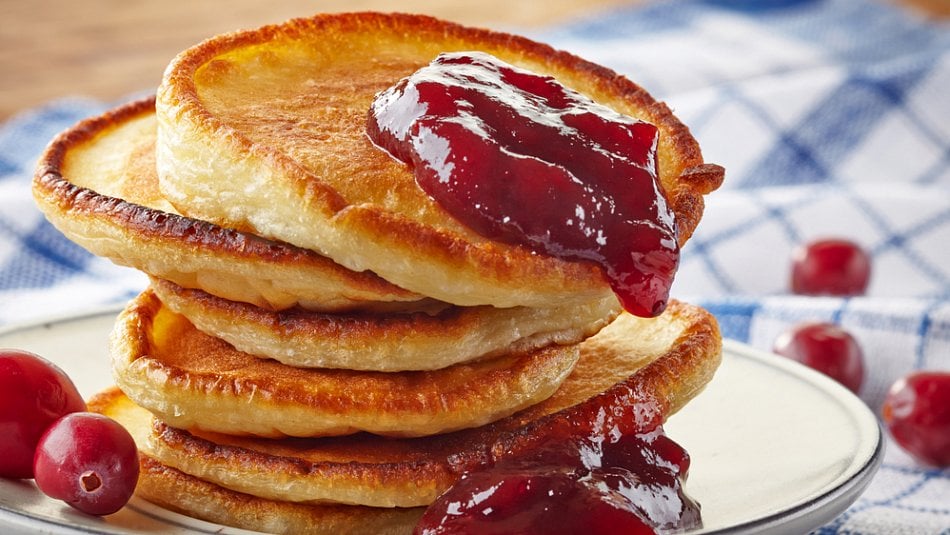
Lívance – Round, thick, and soft. Those are traditional Czech pancakes. The add-on of yeast in the egg batter gives them an exceptionally soft and buttery texture and differentiates them from other common pancake varieties. Lívance are generally small in size, with a light golden-brown color and crispy edges. The Czechs prefer to consume them dusted with powdered sugar or topped with various fruit jams, but their slightly sweet taste can withstand numerous other toppings and complements.
Australia
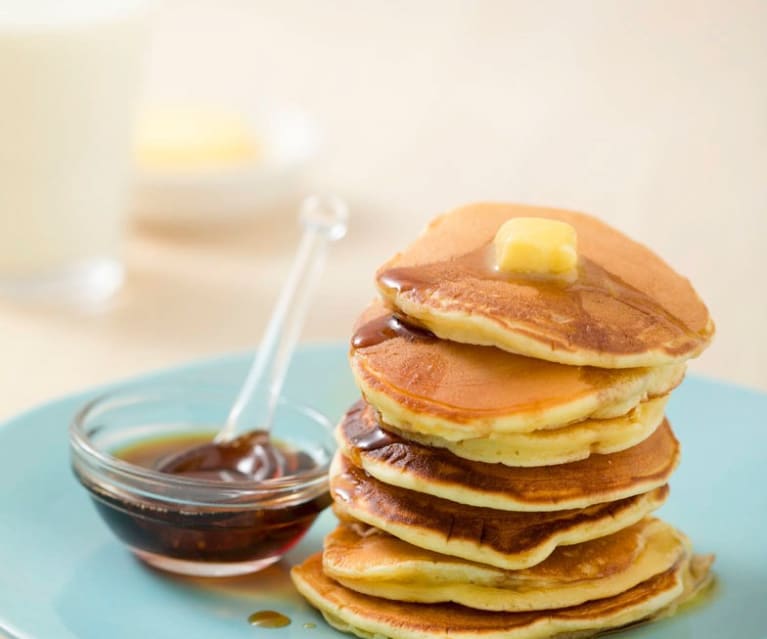
Pikelets are as Australian as Kangaroo or Koala Bear. Even Though the size of the pancake entirely depends on the person cooking it usually, pikelets are smaller than pancakes. They are also thicker. … you may say that s pikelet is a thicker version of the pancake that is fluffier.
Yemen
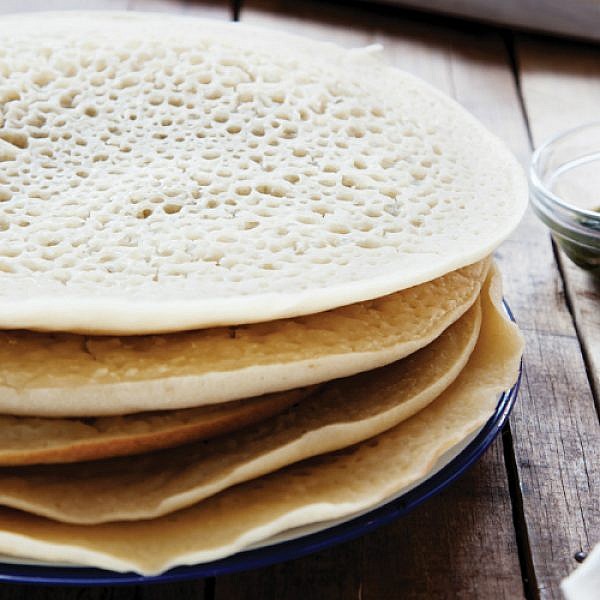
Lahoh is a spongy bread cake popular in flatbread which is eaten in Yemen Somalia, Djibouti, and Ethiopia. Those spongy pancake, mase from sourdough, that looks remarkably like an English crumpet or Ethiopian Injera. Yemeni lahoh pancakes are eaten for breakfast with ghee butter and honey.
Korea
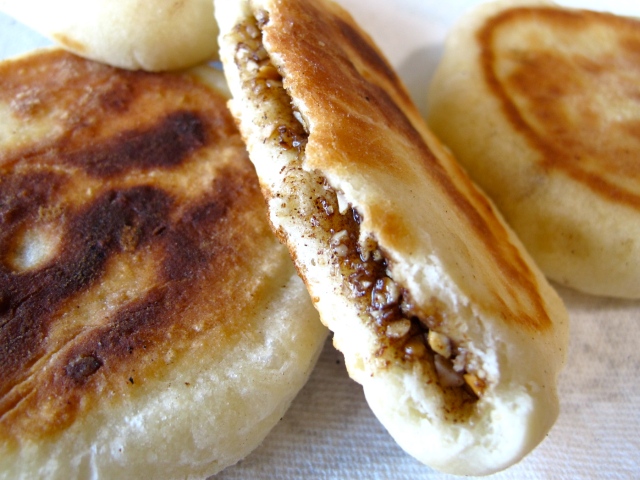
Hotteok, sometimes called Hoeddeok, is a type of filled Korean pancake. Those stuffed, fluffy, and thick pancakes, are popular street food in South Korea, usually served during the winter season. They are made of wheat flour, yeast, water, milk, and sugar. They are stuffed with honey, nuts, or brown sugar. Hotteok tastes like a bready pancake filled with cinnamon sugar. Because it is a yeasted dough, you get a nice rise that resembles a soft bread, but the manor of cooking gives it the crisp outsides of a pancake made in a skillet.
Malaysia
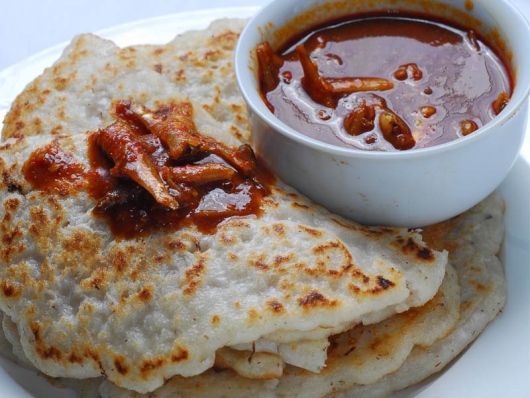
Malaysian pancakes, known as Pek Nga or Lampeng Kelapa, are spicy pancakes. Made out of two basic ingredients – flour and shredded young coconut. It is extremally simplest and famous breakfast meal you can have. Most often served for breakfast with fish curry or coconut rice. Best to have it dipped with leftovers curry gravy or sambal ikan bilis – my personal choice is fish curry.
Scotland
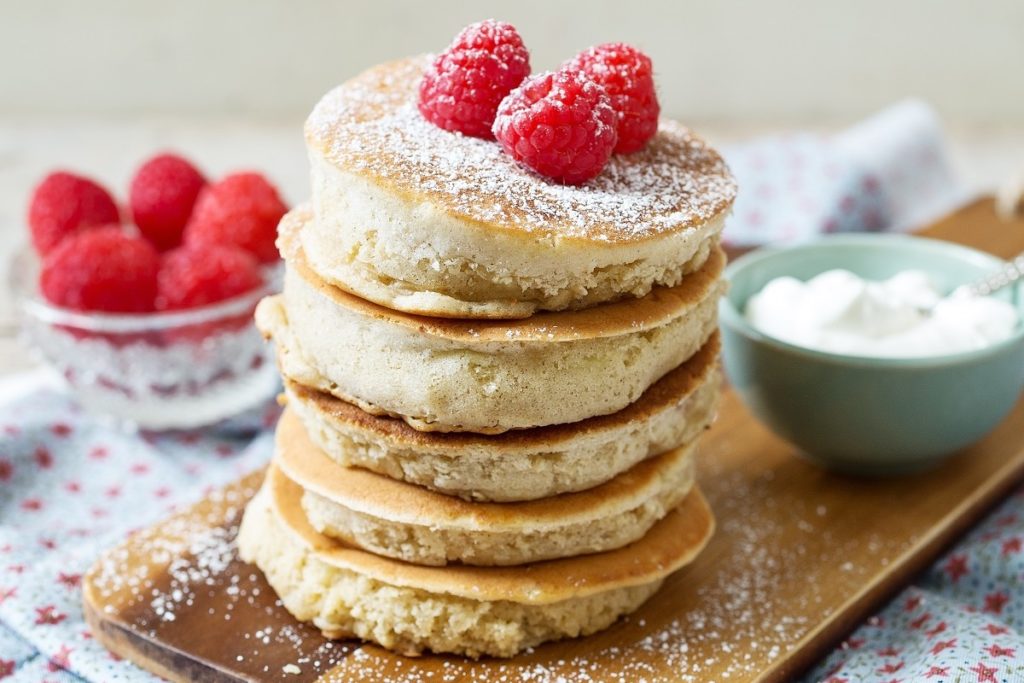
Drop Scones, or Scottish pancakes, are similar to American pancakes. They are a simple snack or a quick breakfast. Smaller than American or English Scottish pancakes are served with jam, butter, or cream. Traditionally for afternoon tea.
Thailand
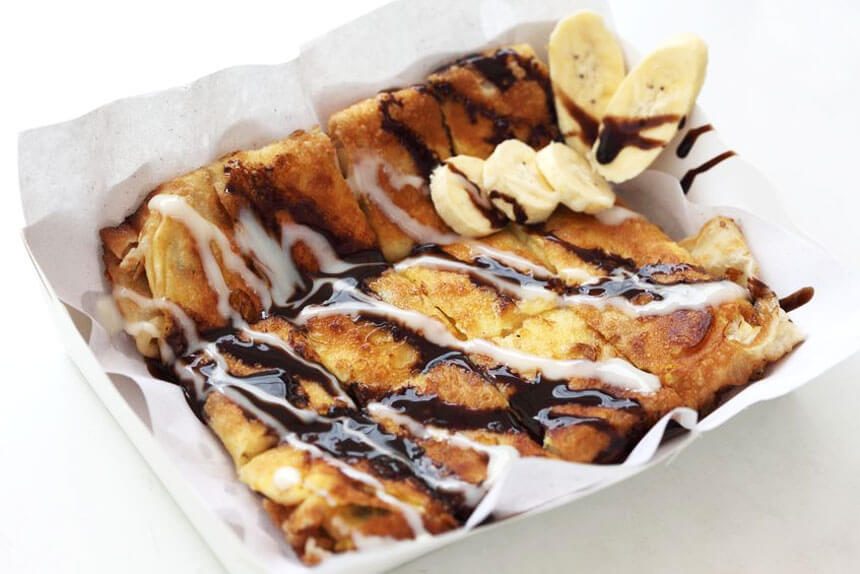
Thai Roti Pancakes are available in a sweet or savory version. The sweet ones are cut into pieces and drizzled with condensed milk, often with the addition of bananas or other fresh fruit. Crispy Roti are crispy pancakes. Thai savory pancakes are most often seasoned with curry.
Wells
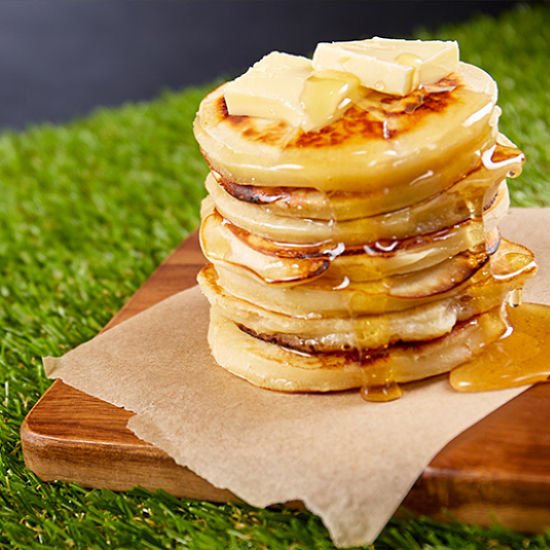
Called Crempog, ffroes, pancos and cramoth. Whats Am I talking about? Welsh pancakes! They are made with flour, buttermilk, eggs, vinegar, and salted butter. They may contain yeast or oatmeal. Traditionally made on bakestones or griddles, crempog is one of the oldest recipes in Wales. Thick Welsh pancakes are always stacked on the plate, before they are served.
Vietnam
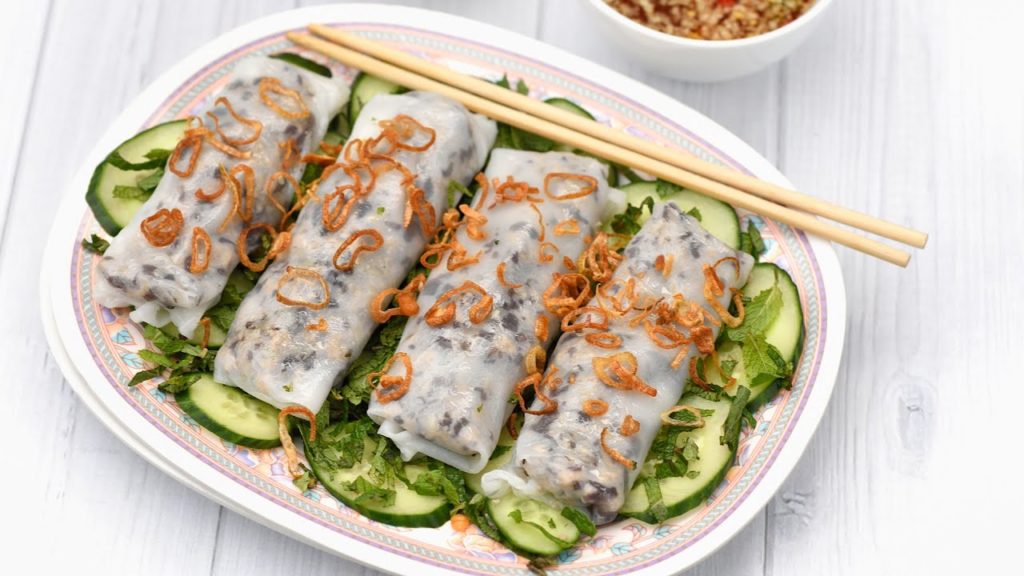
bánh cuốn are Vietnamese gluten-free rice pancakes made from rice flour, egg, coconut milk and turmeric with fresh vegetables. It is a paper-thin steamed rice flour pancake. The pancakes are pulled off of the linen steamer base, and immediately rolled with minced pork and mushrooms, then piled on a plate, sprinkled with deep fried shallots, snipped with scissors into bite sized sections, and topped with fresh herbs such as cilantro or Vietnamese basil. A plate of bánh cuốn is a light dish traditionally eaten as breakfast in Hanoi but now can also be found as a late-night snack.
Italy
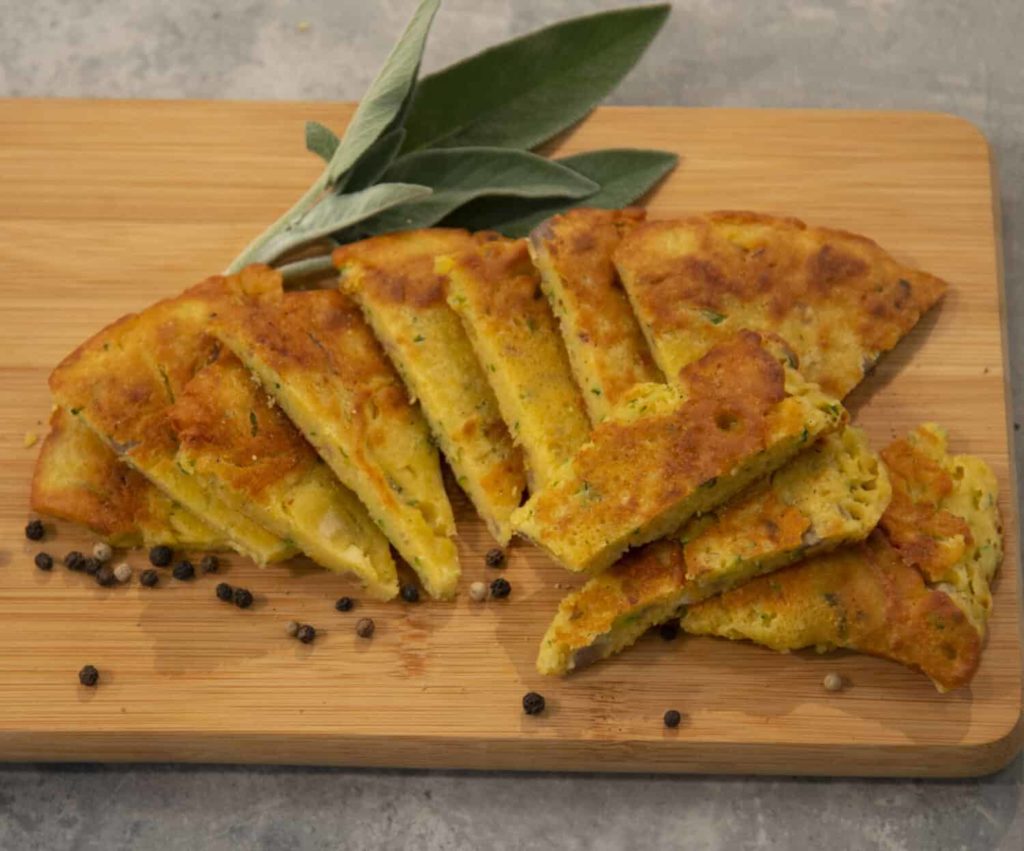
Farinata, also called Socca, are Italian pancakes. They are made of chickpea flour, olive oil, rosemary, salt, pepper, and water. Extremally popular in Mediterranean countries. It’s traditionally cooked in wood ovens on copper disks, roughly cut and served hot or warm. Thin, crispy pancakes are a great snack.
Sweden
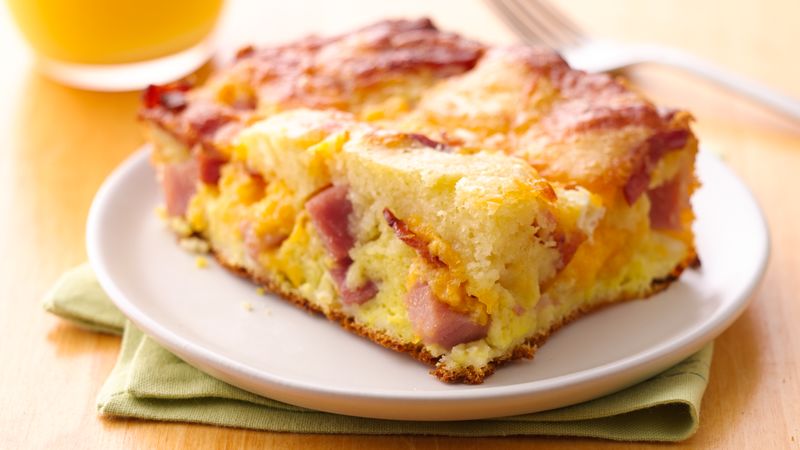
Fläskpannkaka is an oven-made pancake baked from eggs, milk, flour, salt. Uniquely it contains pieces of sliced pork. The ingredients are placed in a pan and baked in the oven. It is typically served with lingonberries. Varieties of the dish contain onion, apples, blueberries, or garlic.
**********************************************
There is so much more to discover , in the amazing world of pancakes. Its no way I could describe all of them here… which one are your favorite?? Which one are the staple in your country?? Which one should join this list ??? let me know in the comment section…
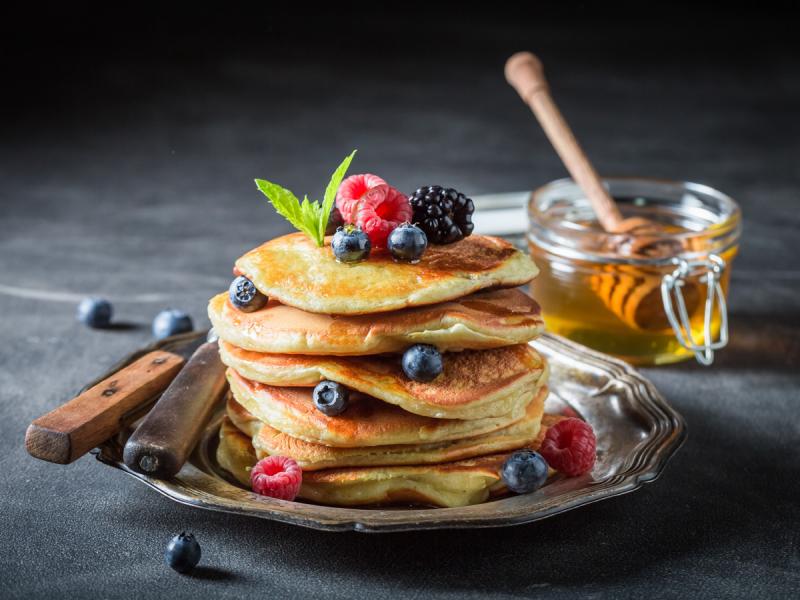
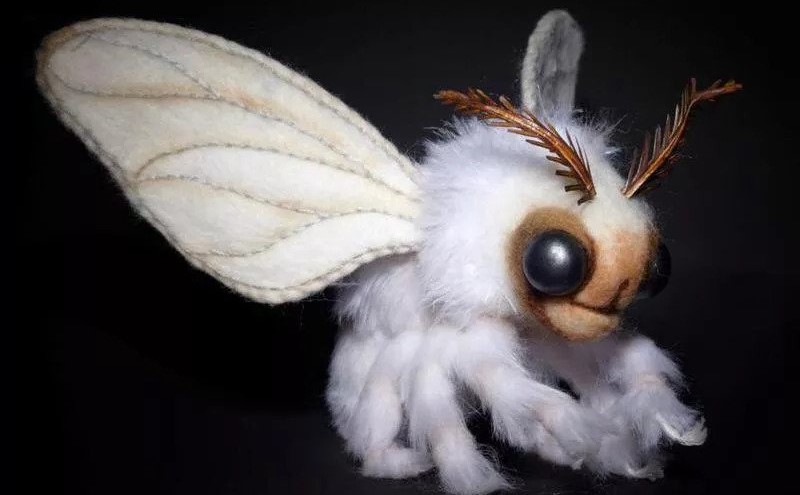

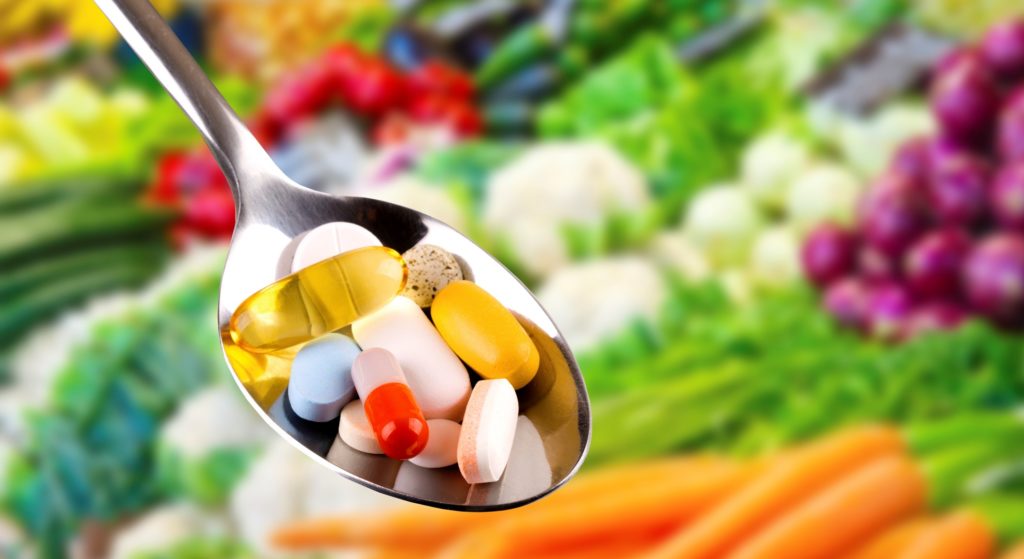
Good and informative post. Mentioned so many mouth watering, delicious dishes. Thanks
im very happy that you have enjoy it !
Wszystkie wyglądają pysznie ale najbardziej chciałabym spróbować Japońskich dorayaky.
Świetna robota, kocham ten blog!!!! 😊😊😊
dziekuje sloneczko
I really love this….when I travel around to these other countries I can try their Pancake
Im so happy to hear that !!!! that’s the best way of traveling … discovering the local food
Thanks for a marvelous posting! I certainly enjoyed reading it, you’re a great author.I will ensure that I bookmark your blog and will come back in the foreseeable future. I want to encourage continue your great writing, have a nice holiday weekend!
Howdy! Someone in my Facebook group shared this site with us so I came to take a look. I’m definitely enjoying the information. I’m book-marking and will be tweeting this to my followers! Excellent blog and wonderful design.